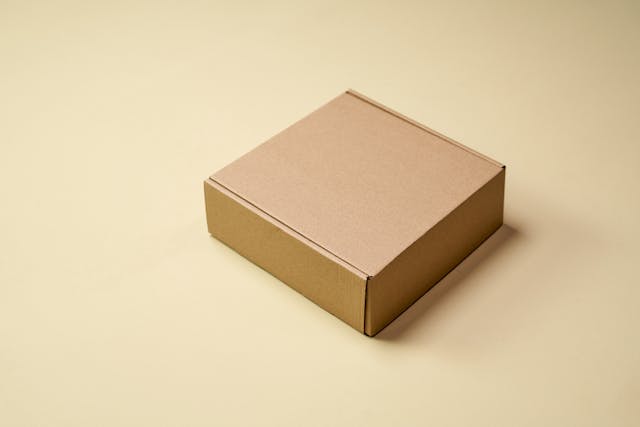Creative cereal box project examples for Jimmy Carter: Learn how to design, decorate, and present his legacy in unique visual ways.
A Jimmy Carter cereal box project is a creative school activity where students design a cereal box inspired by Carter’s life, presidency, and humanitarian legacy. It blends art, research, and storytelling into one historical tribute. This educational project encourages skills and tactics that develop creativity and presentation abilities in students.
The first time I heard about a cereal box project, I honestly pictured a grocery store art exhibit with rows of Frosted Flakes redesigned to honor world leaders. It wasn’t until my cousin, a ninth-grader, brought home a “Jimmy Carter Cereal Box” assignment that I understood the genius of it.
There it was: a humble cardboard box wrapped in construction paper, covered with peanut farm illustrations, a Camp David peace treaty logo, and the smiling face of the 39th President of the United States. It wasn’t just art; it was biography disguised as breakfast.
That’s the beauty of this trend. Whether you’re a teacher trying to make history come alive or a student hoping to ace your U.S. Presidents project, the Jimmy Carter cereal box project turns political history into something tactile, personal, and unexpectedly delightful.
Let’s unpack, or rather unbox, some of the most creative, well-structured, and thought-provoking cereal box project examples for Jimmy Carter you can use or remix today.
Article Breakdown
What Is a Cereal Box Project and Why It Works So Well
A cereal box project is an educational craft that asks students to transform a cereal box into a 3D biography. Instead of cereal, the “contents” are facts, achievements, and symbolic imagery.
Teachers love it because it engages multiple skills:
- Research: finding accurate biographical information.
- Creativity: visual storytelling and design.
- Critical thinking: deciding what defines a person’s legacy.
According to educational design theory, students retain much more information when they engage in creative reinterpretation rather than rote memorization. This kind of project doesn’t just test knowledge; it builds connection.
And when it comes to Jimmy Carter, that connection runs deep. He wasn’t just a politician. He was a peanut farmer, a human rights advocate, and the first U.S. President to prioritize renewable energy on the White House roof.
So if your box tells his story, you’re not just doing an art project; you’re narrating a quiet revolution in American values.
Core Design Elements of a Jimmy Carter Cereal Box
Every cereal box project follows the same rough template, just like real cereal brands: front, back, sides, and top. Here’s how each panel can be transformed for Jimmy Carter’s story.
The Front: The Brand of Jimmy Carter
Think of this as the box cover. It’s your first impression: bold, catchy, and symbolically rich.
Ideas for the front panel:
- A cereal name like “Carter’s Crunch: Leadership You Can Trust.”
- A portrait of Jimmy Carter with his signature modest smile.
- Iconic imagery such as peanut farms, solar panels, or the White House lawn.
- Bright red and blue tones to echo the campaign aesthetic of the 1970s.
The front of the box should feel alive, like the product inside promises a better understanding of who Jimmy Carter was.
The Back: His Legacy and Humanitarian Work
The back panel is where most students dive into storytelling. Carter’s presidency (1977–1981) wasn’t flashy, but it was morally anchored.
Ideas for the back:
- A timeline from his Georgia roots to his Nobel Peace Prize in 2002.
- A mini comic strip showing the Camp David Accords between Egypt and Israel.
- A fun fact box: “Did you know Jimmy Carter was once a submarine officer?”
- A reflection quote: “We must adjust to changing times and still hold to unchanging principles.”
This section makes the box a mirror of his journey from ordinary man to extraordinary humanitarian.
The Sides: Nutrition Facts of Leadership
Here’s where creativity meets irony. Instead of calories and carbohydrates, list Carter’s moral “ingredients.”
Left Side: “Leadership Nutrition Facts”
| Trait | % Daily Value |
|---|---|
| Integrity | 100% |
| Empathy | 95% |
| Political Flash | 20% |
| Humanitarian Spirit | 110% |
| Patience | 90% |
| Popularity (in office) | 60% |
Right Side: “Ingredients” Peanuts, solar power, diplomacy, faith, southern humility, and Habitat for Humanity.
This approach humanizes Carter while keeping the structure playful and instantly readable.
The Top: Tagline and Symbolism
Add a slogan that summarizes his presidency’s essence. Examples:
- “A Taste of Honest Leadership.”
- “Harvesting Hope, One Decision at a Time.”
- “The Original Solar Power President.”
Even small touches like a fake barcode that says “1977–1981” or a best-before date of “Never expires: Integrity lasts forever” can elevate your design from good to unforgettable.
5 Cereal Box Project Examples for Jimmy Carter
Let’s explore some creative, classroom-tested examples you can adapt or remix.
Peanut Power Crunch
Theme: Carter’s humble origins as a peanut farmer in Plains, Georgia. Front: Cartoon peanuts shaped like presidents marching toward the White House. Back: “From Farm to Freedom”: a story panel connecting agriculture to Carter’s grassroots political style. Sides: “Sustainable Ingredients”: how Carter’s faith and rural upbringing shaped his empathy-driven policies.
This version emphasizes humility and growth, the soil from which his moral compass sprouted.
Solar Flakes
Theme: Carter’s environmental vision and renewable energy advocacy. Front: A sunburst background with solar panels and a cheerful Carter holding a box of “Solar Flakes.” Back: A fact section titled “The President Who Believed in the Sun,” showing how he installed solar panels on the White House in 1979. Sides: A call to action: “Recycle your box. Continue his vision.”
This one appeals to science lovers and sustainability-minded students. It also connects Carter’s foresight to today’s climate conversations.
Peace-O’s
Theme: The Camp David Accords and Carter’s role as peacemaker. Front: Carter standing between Anwar Sadat and Menachem Begin, each holding a bowl of “Peace-O’s.” Back: Cartoon clouds forming a dove of peace with fun facts about Middle East diplomacy. Side: “Peace Nutrition Facts” showing empathy, negotiation, and resilience as key nutrients.
This box captures Carter’s enduring identity as the President who believed peace was worth the effort, even when it wasn’t popular.
Habitat Crunch
Theme: Post-presidential humanitarian work with Habitat for Humanity. Front: A hammer, nails, and cereal pieces forming a heart. Back: Before-and-after house drawings symbolizing hope and rebuilding. Sides: “Ingredients of Service”: teamwork, compassion, humility.
This design connects directly with students learning about volunteerism, showing that leadership doesn’t end when the term does.
Global Goodness Bites
Theme: Jimmy and Rosalynn Carter’s global humanitarian initiatives. Front: A globe surrounded by small cereal pieces labeled “Hope,” “Peace,” and “Health.” Back: Map highlighting Carter Center efforts in disease eradication and election monitoring. Sides: QR code leading to a short presentation or Carter Center video clip.
This example bridges art and technology: perfect for classrooms incorporating digital storytelling.
Comparing Jimmy Carter Cereal Box Themes
| Theme | Focus Area | Best For | Visual Style |
|---|---|---|---|
| Peanut Power Crunch | Early life and values | Elementary | Farm-inspired, warm tones |
| Solar Flakes | Energy and environment | Middle school | Bright yellows, sun motifs |
| Peace-O’s | Diplomacy and peace | High school | Calm blues, symbolic doves |
| Habitat Crunch | Humanitarian work | All grades | Construction visuals |
| Global Goodness Bites | Global outreach | Advanced | World map, global unity |
Materials You’ll Need
Basic Supplies:
- Empty cereal box (regular size)
- Construction or craft paper
- Markers, crayons, colored pencils
- Scissors and glue
- Printed pictures of Jimmy Carter, solar panels, peace symbols
- Optional: QR code links, 3D textures like felt, foil, or cardboard
Pro Tip: Spray adhesive gives a cleaner finish than glue sticks, and double-sided tape works wonders for layering printed textures.
Presentation Tips: Turning a Box into a Story
When you present, think like a brand ambassador. You’re selling Carter’s legacy through design, not cereal.
Tips for presenting effectively:
- Speak with narrative rhythm. “This box tells the story of a man who planted peanuts and grew hope.”
- Use humor sparingly. A witty name grabs attention, but the tone should honor the subject.
- Connect it to modern issues. Mention how Carter’s values echo today: renewable energy, peace talks, and ethical governance.
- Add interactivity. QR code links, trivia flaps, or detachable fact cards make your box stand out.
Remember, creativity isn’t just about decoration: it’s about meaning design.
Common Mistakes to Avoid
Even the most creative ideas can fall flat if presentation isn’t balanced. Avoid these pitfalls:
- Overcrowding with text. Too many facts make it unreadable.
- Forgetting the sides. Each panel matters; think 360°.
- Generic visuals. Don’t just paste clip art: use symbolism that tells the story.
- Neglecting accuracy. Double-check every fact. For instance, Carter’s presidency ended in 1981, not 1980.
Your box isn’t just decoration; it’s historical storytelling in disguise.
Frequently Asked Questions
What is a cereal box project for Jimmy Carter? It’s a hands-on educational craft where students turn a cereal box into a visual biography of President Jimmy Carter’s life and achievements.
What should I include on the box? Include Carter’s background, major accomplishments, legacy, quotes, and creative imagery: all within a cereal brand-style layout.
What grade levels use this project? Usually grades 4–10, though it can be adapted for advanced or interdisciplinary classes.
How can I make my cereal box project stand out? Focus on storytelling, symbolism, and tactile details like texture or flaps. Add unique features like 3D art or QR codes.
What are Jimmy Carter’s most famous contributions? Peace efforts through the Camp David Accords, solar energy initiatives, and humanitarian work with Habitat for Humanity and The Carter Center.
Key Takings
- Cereal box projects turn historical learning into artful storytelling.
- Jimmy Carter’s life offers versatile themes: from farming roots to global peace.
- Design balance matters. Each panel serves a narrative function.
- Symbolism enhances memory: peanuts, solar panels, and peace doves carry deep meaning.
- Creativity and accuracy combined make the perfect grade-winning combo.
- Simplicity wins. A clean, readable layout always outshines clutter.
- Your box isn’t just schoolwork: it’s a small museum of moral leadership.
Additional Resources
- The Carter Center (Official Site): Explore Jimmy Carter’s global humanitarian initiatives and peacekeeping projects in detail.
- PBS, American Experience, Jimmy Carter: Documentary coverage of Carter’s presidency, his vision for human rights, and his enduring influence.



